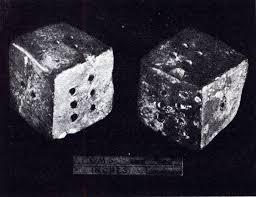Terracotta Dice from the Indus Valley Civilization: A Surprising Discovery in Harappa, Pakistan (2600-1900 BC)
One of the most interesting finds from the Indus Valley civilization, known as Harappa in Pakistan, are the terracotta dice dated between 2600 and 1900 BC. These artifacts not only offer a deep insight into the social and cultural life of the Indus people, but also help to understand the forms of entertainment and possible elements related to beliefs and rituals of the time.

The Indus Valley Civilization, which spanned from approximately 3300 to 1300 BC, is one of the world’s four great ancient civilizations, along with Egypt, Mesopotamia, and China. Primarily located in present-day Pakistan and India, this civilization is known for its great cities such as Harappa and Mohenjo-Daro, with advanced urban planning, drainage systems, and flourishing trade.
One of the notable finds at Harappa are the terracotta dice, made from clay and dated to around 2600-1900 BC. Although small in size, these dice contain valuable information about the recreational activities of the Indus inhabitants. Often decorated with symbols and patterns, they reflect sophistication in design and attention to detail.

These terracotta dice are not simply toys, but may have played a role in games or religious rituals. The size and shape suggest that they were used in games that may have included elements of chance or strategy. The presence of these dice in residential areas and archaeological sites indicates their popularity in everyday life.
The study of symbols and patterns on the dice shows the development of the sign system in the Indus civilization. Although we do not yet fully understand the Indus writing system, these features could provide clues as to how the people of Indus communicated and recorded information.
The discovery and study of the Harappan terracotta dice not only helps us to better understand the recreational and social activities of the Indus people, but also contributes to the study of the culture and society of this ancient civilization. These artifacts show an important part of the spiritual and social life of the Indus people and open up new possibilities for research into their belief systems and rituals.

The Harappan terracotta dice are clear evidence of the development of the Indus Valley Civilisation in the social and cultural spheres. They are not only recreational items but also crucial clues that help us further explore the daily life, beliefs and rituals of the Indus people. The continued study of these artefacts will help illuminate more aspects of this great civilisation and enrich humanity’s knowledge of the ancient past.






